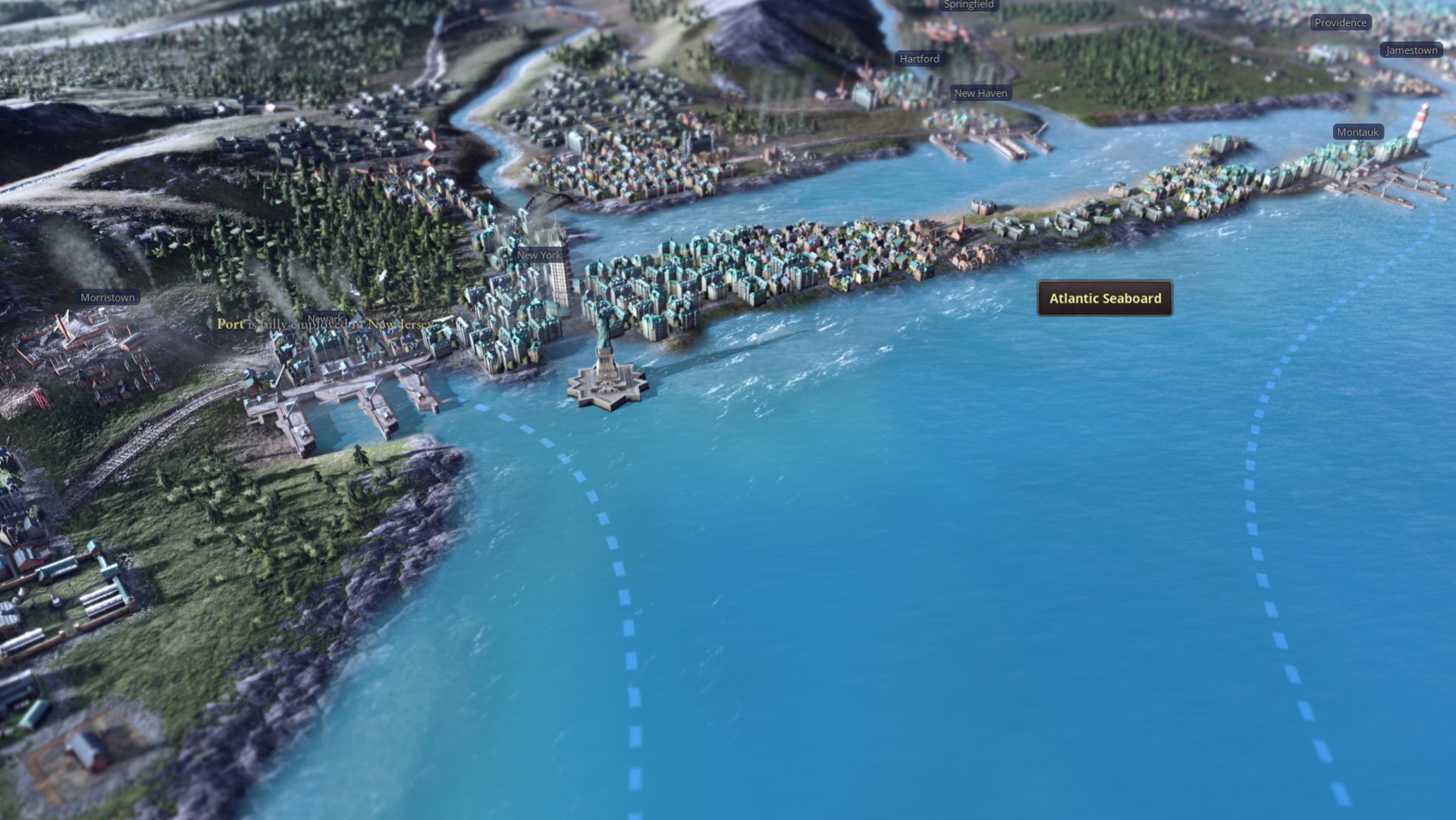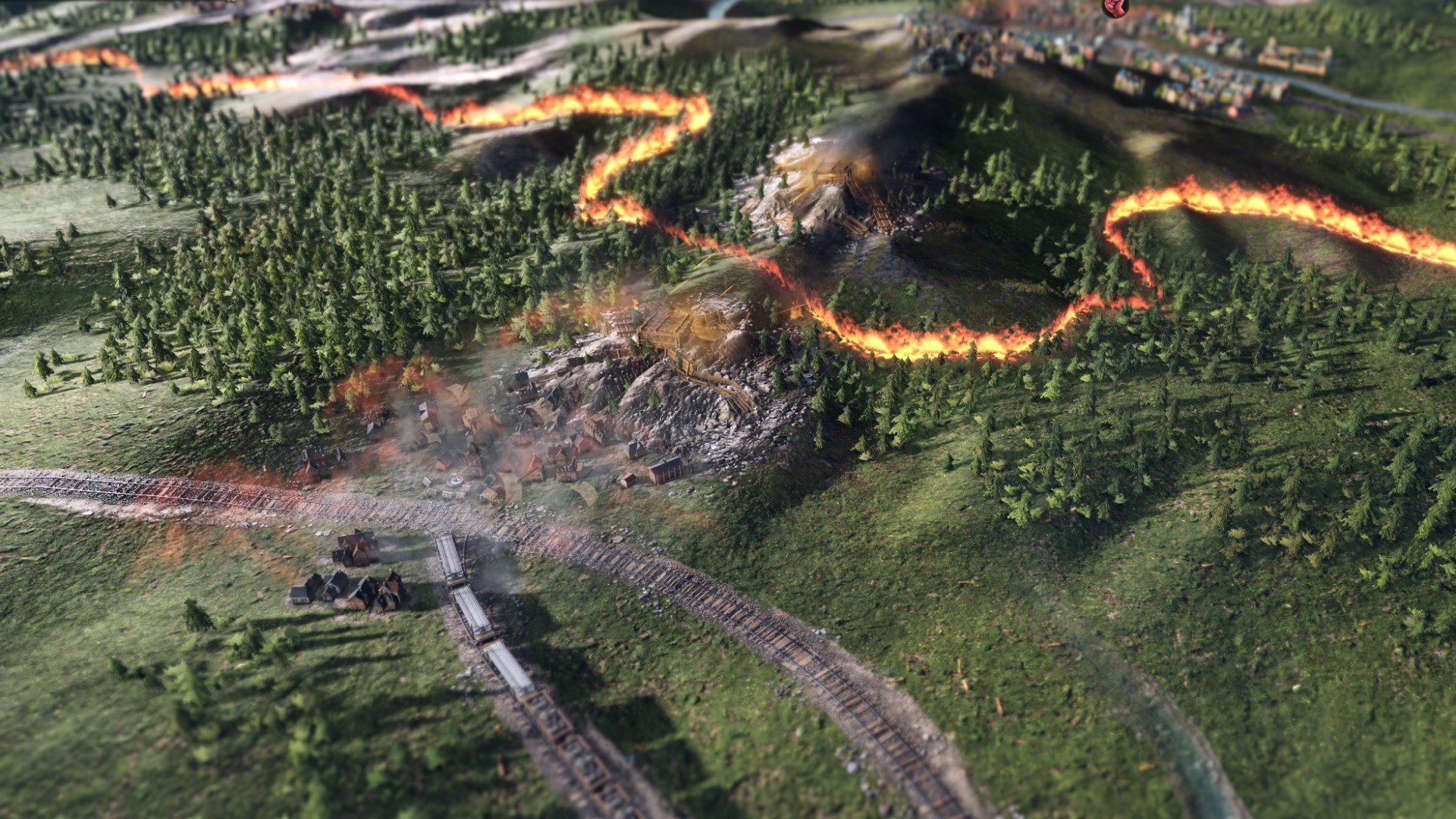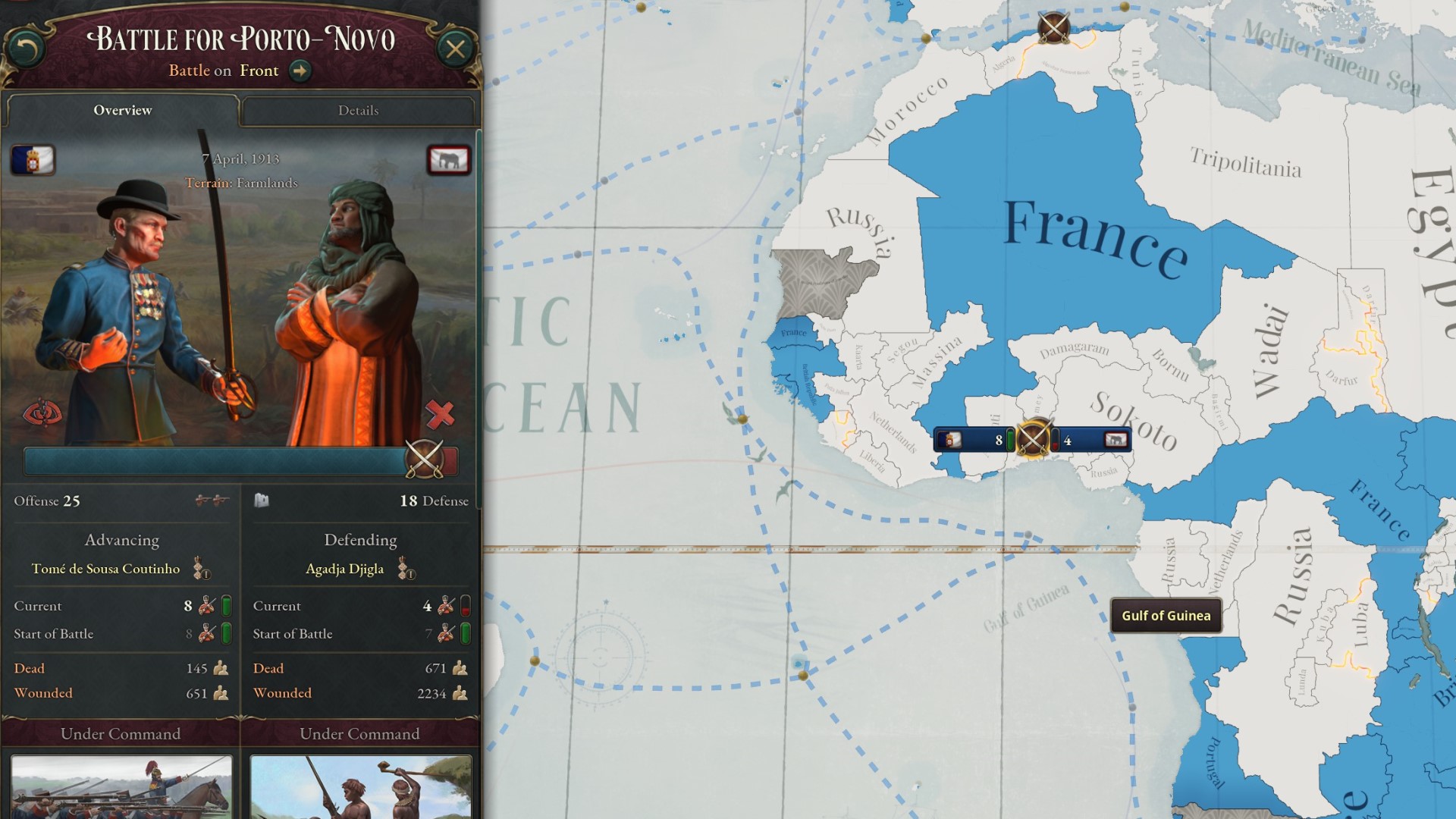Our Verdict
An ambitious, beautiful, and obsessively detailed society simulation that still needs to iron out a few rough edges.
When the ‘Game Over’ screen arrived after my century in charge of the United States for our Victoria 3 review, I looked back over a very different hundred years from those familiar to me from history books. There had never been a Civil War – in the version of the story that unfolded in Paradox’s latest grand strategy game, slavery was abolished more or less without incident in the1840s, but we’d come close to a revolution over the abolition of child labour thirty years later. By 1936, we were no longer the ‘United States’ at all – the nation was a wildly successful anarchist commune known as the United Syndicates of America.
Victoria 3 faces the challenge of living up to a decade of anticipation, and it’s made some bold changes to address the shortcomings of its predecessor. It’s without a doubt the most beautiful game Paradox has ever made, and arguably the most welcoming for newcomers. It makes fundamental changes to the way the series considers the ethics of slavery, labour, colonisation, and the agency of indigenous people. However, at launch, Victoria 3 is a wobbly prospect: bugs, crashes, and a few frustrating design idiosyncrasies leave the whole thing feeling somewhat underdone.
The good news, though, is that despite the occasional judder from beneath the bonnet, Victoria 3 is still a delightful grand strategy game to play. As the president, queen, or chairman of any nation on earth starting in 1836, you’ll guide your country through a period of explosive growth across the world, primarily by overseeing the construction and management of industry. Each individual state or province in your nation can be home to a wide variety of both rural and urban production centres, government buildings, and military facilities, where local people will work and earn their living.

What sets the Victoria series apart from Paradox’s other grand strategy games is its focus on the ‘pop’ – the units collectively simulating each country’s diverse inhabitants. Each pop has its own culture, religion, profession, income bracket, political interests, and needs. Importantly, when given access to the necessary means, they’ll work to improve their lot in life – or become radicals if they’re consistently ignored.
A treatise could easily be – and has been, across Paradox’s detailed series of dev diaries – written explaining all the moving parts in this global model of 19th century economics and politics. There are taxation policies to consider, your level of investment in institutions like health care and social security, the kinds of explosives to be used in your iron mines, what tactics your naval battle groups should employ, and so on. All of this depends greatly on the nation you choose at the outset, and on your own goals for it: do you want to become a mighty military power, forge a vast industrial empire, or work toward a perfect egalitarian society? Victoria 3 is fluid and robust enough to allow for any of these goals in the context of almost any nation, and I was consistently delighted by the day-to-day tasks created by working toward them.
In the newly industrialised world of the 19th century, the answer to almost every question is expansion and growth. Each industry is dependent on others, both for production of its input goods and for creating the demand necessary to make it profitable. If I want to make high-quality clothes, I’ll need a source for dyes and silk; to expand my rail network, I need coal, steel, and engines. I could retool my furniture manufacturing to make luxury sofas, but I’ll need expert workers and specialty hardwood – can I dedicate some of my lumber mills to producing that material? Is my literacy rate high enough to support the additional demand for educated employees?
Victoria 3 is a constantly shifting web of interconnected organisations, businesses, interest groups, armies, and fleets of merchant convoys. It all takes place on a breathtaking map of the world that shifts from a glittering model railroad view while zoomed in to a colourful and beautifully lettered paper map when zoomed out. Industry, railroads, and wars all come to life in the close-up view, and active war fronts are lit with angry fire on the paper map.
Warfare and diplomacy are handled by new systems in Victoria 3. Any hostile action – whether it’s straight-up conquest or a demand for policy change, such as abolishing slavery – begins with a diplomatic play, in which third-party nations with an interest in the area get a chance to weigh in and sway the outcome. When matters escalate to armed conflict, my input is limited to directing generals to specific fronts and activating conscription centres – the officers themselves work out where to conduct battles. I’m left to sort out where all the bullets, tanks, and conscripts come from.
The new system accomplishes two things: it keeps Victoria 3’s focus from shifting too sharply into wargame territory, and it elegantly illustrates the simple modern truth that war itself is another product of industrialisation.
Because of how interconnected everything is in Victoria 3, it’s difficult to talk about any one element without stumbling into a lengthy explanation of the entire game. However, the overhaul of the outdated colonial system deserves a highlight. Whereas in Victoria 2, colonies were modelled as simple blank spaces on the map ripe for exploitation, Victoria 3’s colonisable regions are controlled by indigenous people collectively termed ‘decentralised powers.’ It’s an important shift in design, and it allows for colonised people to be granted independence and then played as a sovereign nation for the rest of the game. In my next American campaign, I plan on switching over to the Haudenosaunee – upon whose former lands I sit as I write this review.
Unfortunately, all this ambition comes at a price. The build I played was somewhat prone to crashes (possibly due to my ultrawide monitor), and during my US campaign, it would slow to an agonising crawl while I was using the new ‘lens’ system to quickly build lots of the same facility type across all my states. The graph charting my weekly budget would frequently break, with the line leaving the edges of the pop-up window like an over-eager ‘stonks’ meme. When revolutions started breaking out all over the world, the names of the countries involved would often fail to display in the diplomatic play windows. Instead, I’d see a string of coded instructions to get those names.
This is the kind of thing that may be addressed in patches early on, but there are more troubling issues with Victoria 3. By design, I have no direct control over my pops, but some information is deliberately obscured which I felt ought to be accessible. I should, for example, be able to see the reasons a pop is radicalising, or which of the goods they need are too expensive. Instead, I’ve got to puzzle this out in my head. Victoria 3 is great about giving me loads of information on my states’ demographics, but it won’t let me ‘poll’ a specific pop to see what its most pressing issues are.
That exacerbates a deeper problem, which is a feeling of permanent distance from my citizens. For a game so focused on people, I feel like I’m always kept at arm’s length from them. My decisions have an observable impact over the long term, but I never get to see how they’re changing someone’s day-to-day life. Instead, I’m left to induce a sense of this from cold data about literacy, standard of living, and interest group attraction rates.
All this said, Victoria 3 is still a towering achievement, and one that will only become more interesting in time. It’s a lot to take in, but Paradox has built a new portable tutorial system into a running journal that will provide your basic goals, and also tell you why they’re important. The journal provides guides for multiple different playstyles, and also allows you to launch significant undertakings like building the first skyscraper, mapping the south pole, or building the Panama canal. It’s an elegant way to bring newcomers on board and provide some historical colour for what can at times be a very commerce-focused experience.
The most concise way I can describe Victoria 3 is that it’s a mesmerising, working model of the Liberalist theory of international relations, a rejection – or at least a critique – of the simpler, Realist notion that raw power is the only variable that truly matters. Victoria 3 shows that the internal structures, institutions, and happiness of a nation matter at least as much as the number of battalions it can field, or how many fighting ships it has at sea.



